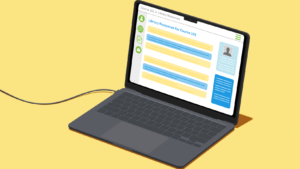Video content is more accessible and powerful than ever. For teachers and educators, integrating video into lessons can transform the learning experience, making it more engaging, interactive, and effective. Whether you’re teaching math, literature, history, or science, video content can enhance understanding and retention. Here’s how you can harness the power of video across various subjects.
1. Supplement Traditional Lessons with Visual Explanations
Video content can reinforce complex concepts in any subject. When you introduce a new topic, consider pairing your explanation with a video that visually represents the material. In subjects like math and science, videos can break down abstract concepts through animations, diagrams, or demonstrations, helping students grasp difficult ideas more easily.
Tip: Use short clips that focus on key points to maintain engagement, and follow up with discussion or hands-on practice.
2. Incorporate Documentaries and Real-World Applications
For subjects like history, social studies, and literature, documentaries can bring real-world events and narratives into the classroom. Historical footage, interviews, and reenactments can help students understand the context and importance of events. For literature classes, consider movie adaptations or author interviews to provide a deeper look into texts.
Tip: Create interactive viewing guides with questions to help students critically engage with the content as they watch.
3. Create Personalized Instructional Videos
Personalized instructional videos are an excellent way to engage students who need extra help or a different learning pace. Tools like Loom, Edpuzzle, and Screencastify allow you to create your own videos tailored to your students’ needs. Whether it’s a walkthrough of a math problem, a grammar lesson, or a science experiment, students can watch and rewatch as needed, giving them more control over their learning.
Tip: Encourage students to pause, rewind, and take notes to ensure they are following along at their own pace.
4. Bring Guest Speakers into the Classroom Virtually
Invite experts and professionals from around the world to share their knowledge and experiences via video. Whether it’s a scientist explaining a recent discovery, an author discussing their writing process, or a historian offering insights on a period of history, video calls or pre-recorded interviews can broaden students’ perspectives.
Tip: Prepare questions with your students beforehand to make the virtual guest interaction more meaningful.
5. Enhance Language Learning with Interactive Videos
In language classes, videos can expose students to native speakers, different dialects, and real-life conversations. Use videos to immerse students in the language they are learning, whether through short films, interviews, or interactive language lessons available on platforms like Duolingo and FluentU.
Tip: Incorporate subtitles to reinforce reading and listening skills, and pause videos for discussion or pronunciation practice.
6. Promote Creativity with Student-Generated Videos
Give students the opportunity to demonstrate their learning by creating their own videos. Whether it’s a digital book report, a science project, or a history presentation, students can use video to express their understanding creatively. Video creation projects foster critical thinking, collaboration, and digital literacy, making them an excellent addition to any curriculum.
Tip: Provide clear guidelines for video content, length, and the tools they can use to ensure a smooth and successful project.
7. Use Animation to Simplify Complex Topics
Animations can illustrate processes and concepts that are otherwise hard to explain with words or static images. Whether you’re explaining the lifecycle of a butterfly, the structure of an atom, or the steps of the water cycle, animated videos simplify and visually enhance complex topics.
Tip: Platforms like TED-Ed and Khan Academy offer high-quality educational animations you can integrate into your lessons.
8. Create Video-Based Assessments
Instead of traditional tests, consider incorporating video-based assessments where students must respond to prompts through recorded presentations or explanations. This type of assessment allows students to express their knowledge in a more dynamic and creative way and caters to various learning styles.
Tip: Use a rubric to clearly define expectations for video assessments and encourage students to reflect on their learning in their recordings.
9. Engage Students with Interactive Video Platforms
Platforms like Edpuzzle and Nearpod offer interactive video lessons that integrate quizzes, polls, and open-ended questions directly into the videos. These platforms encourage active learning by making students engage with the content as they watch, promoting higher retention and comprehension.
Tip: Assign interactive video lessons as homework or classwork, and use the built-in analytics to track student progress and understanding.
10. Curate Playlists for Flipped Classrooms
For flipped classroom models, video content plays a central role in delivering instruction outside of class, allowing students to engage with lectures at their own pace. You can curate playlists of educational videos on platforms like YouTube or create your own series of lessons that students can access at home, reserving class time for interactive activities, discussions, and hands-on projects.
Tip: Ensure the videos are concise and focused on specific learning objectives to prevent information overload.
Final Thoughts
By thoughtfully incorporating video content into your lessons, you can create a more dynamic and engaging learning environment. Whether you’re leveraging videos for instruction, exploration, or student creation, the possibilities are endless, and the benefits are significant. Start small by experimenting with a few of these tips, and you’ll soon see how video can enhance learning in any subject.
Edstablished, created by educator and digital media expert Taylor Jennings, shares insights on education, technology, and libraries. With a focus on EdTech, digital citizenship, and instructional design, Edstablished supports educators in creating engaging learning experiences.






No comment yet, add your voice below!